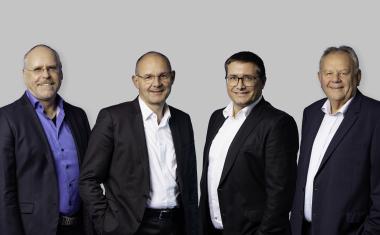An optical disk memory with petabit capacity
Extending the planar recording architecture to three dimensions with hundreds of layers.
The most popular words of 2023 were recently released, with AI Large Language Model (LLM) unquestionably topping the list. As a frontrunner, ChatGPT also emerged as one of the international buzzwords of the year. These disruptive innovations in AI owe much to big data, which has played a pivotal role. Yet, AI has simultaneously presented new opportunities and challenges to the development of big data. High-capacity data storage is indispensable in today’s digital economy.

However, major storage devices like hard disk drives and semiconductor flash devices face limitations in terms of cost-effectiveness, durability, and longevity. Optical data storage offers a promising green solution for cost-effective and long-term data storage. Nonetheless, optical data storage encounters a fundamental limitation in the spacing of adjacent recorded features, owing to the optical diffraction limit. This physical constraint not only impedes the further development of direct laser writing machines but also affects optical microscopy and storage technology. Breaking the diffraction-limited barrier ranks as the foremost challenge in the field of physics, according to the 125 cutting-edge scientific problems.
A multidisciplinary team led by Min Gu at the University of Shanghai for Science and Technology (USST) and the Shanghai Institute of Optics and Fine Mechanics (SIOM), Chinese Academy of Sciences, has successfully overcome this challenge. For the first time, the researchers have demonstrated that optical data storage capacity can reach the petabit (Pb) level by extending the planar recording architecture to three dimensions with hundreds of layers, thereby breaking the optical diffraction limit barrier of the recorded spots. The storage capacity within the area of a DVD-sized disc can reach up to petabit level, equivalent to at least 10,000 Blu-ray discs or 100 high-capacity hard drives.
The dataset behind GPT, which includes 5.8 billion indexed web pages and occupies about 56 petabits of text, would typically require a playground area of hard drives for storage. However, the three-dimensional nanoscale optical disk memory can shrink this space to the size of a desktop computer, significantly reducing costs. Moreover, the energy consumption of nanoscale optical disk memory is several orders of magnitude lower than traditional methods, and its lifespan can reach up to 50-100 years.
In 2013, Min Gu and his research team achieved nine-nanometer direct laser writing technology based on dual-beam writing. German scientist Stefan W. Hell won the 2014 Nobel Prize in Chemistry for the invention of dual-beam super-resolution microscopic imaging technology. Now, the three-dimensional nanoscale optical disk memory technology successfully breaks the diffraction-limited barrier for optical writing and reading, ushering in a new era for the digital economy of big data. (Source: USST)
Link: Institute of Photonic Chips, University of Shanghai for Science and Technology, Shanghai, China











